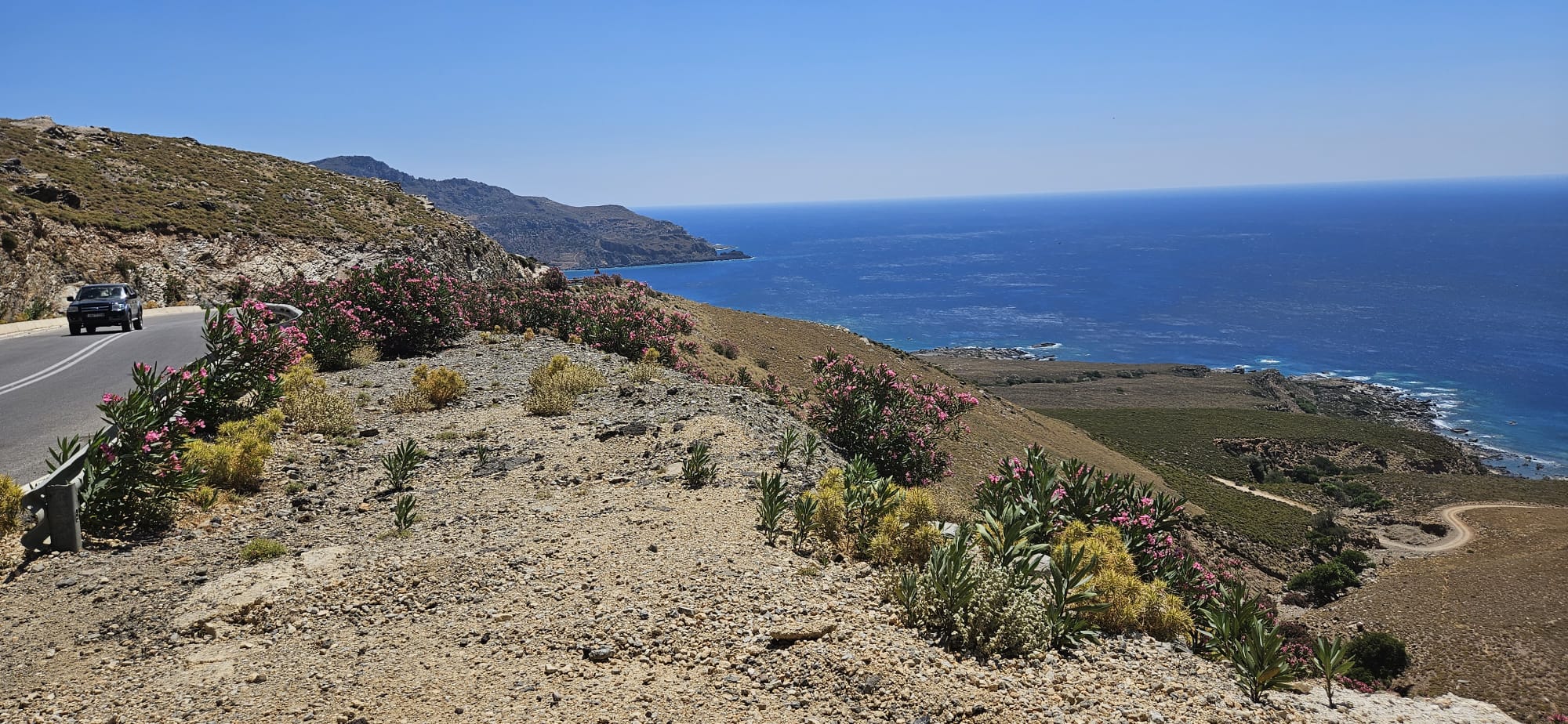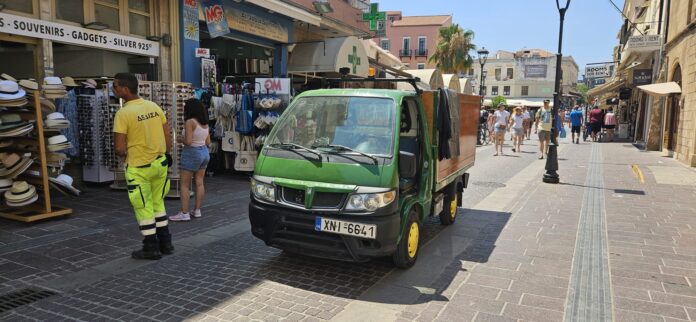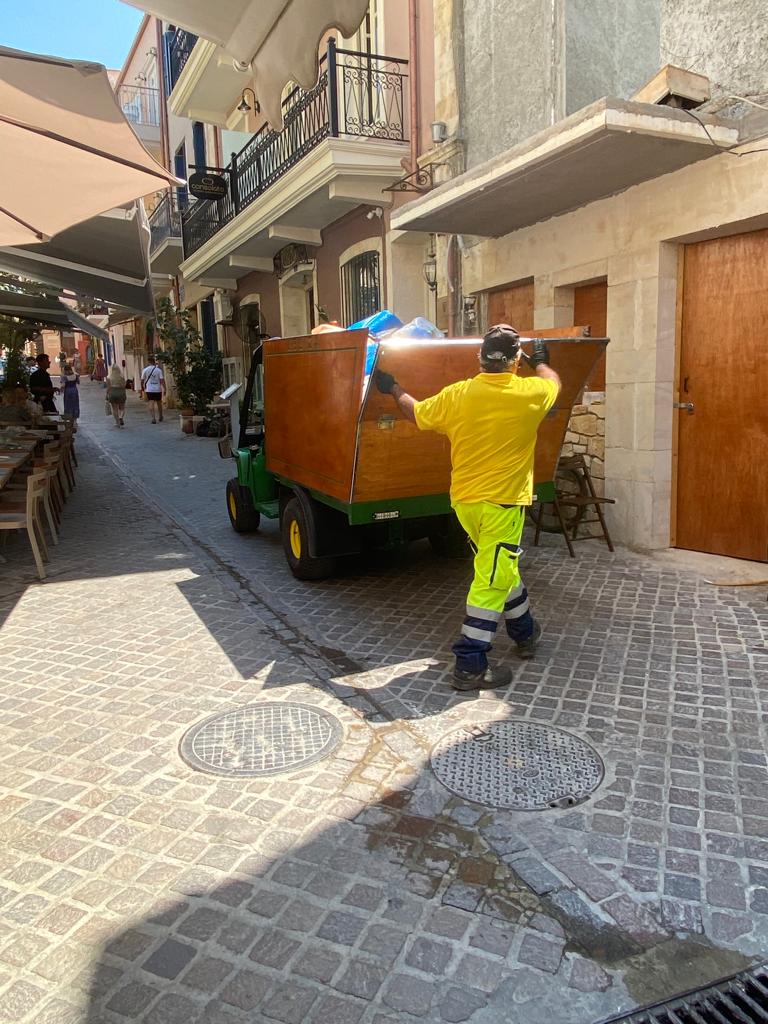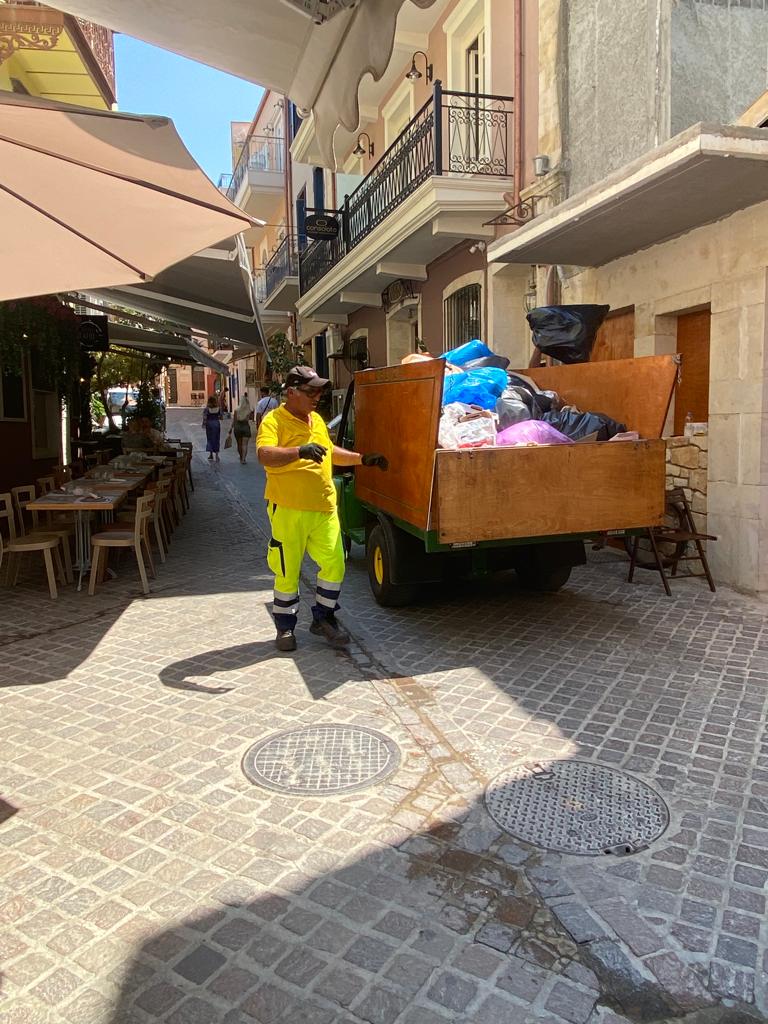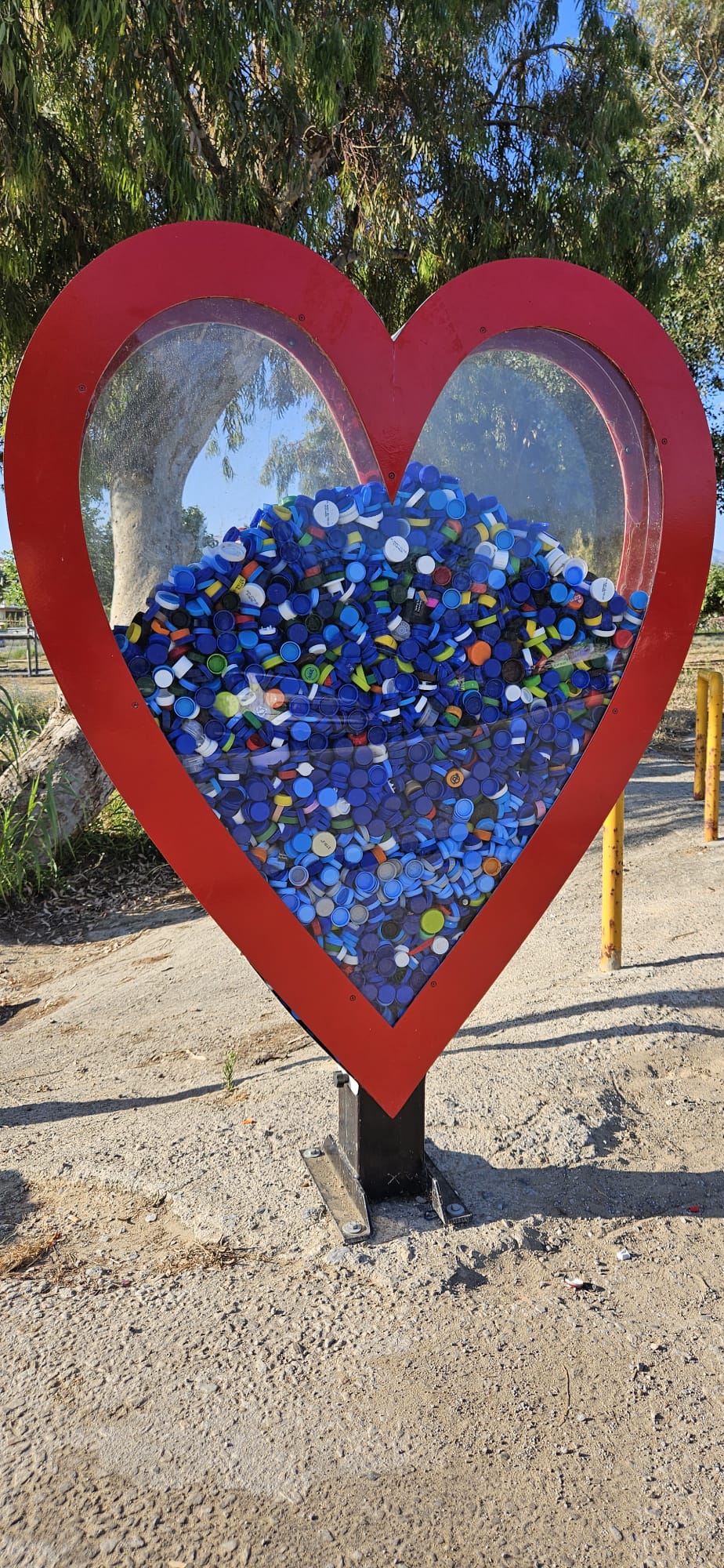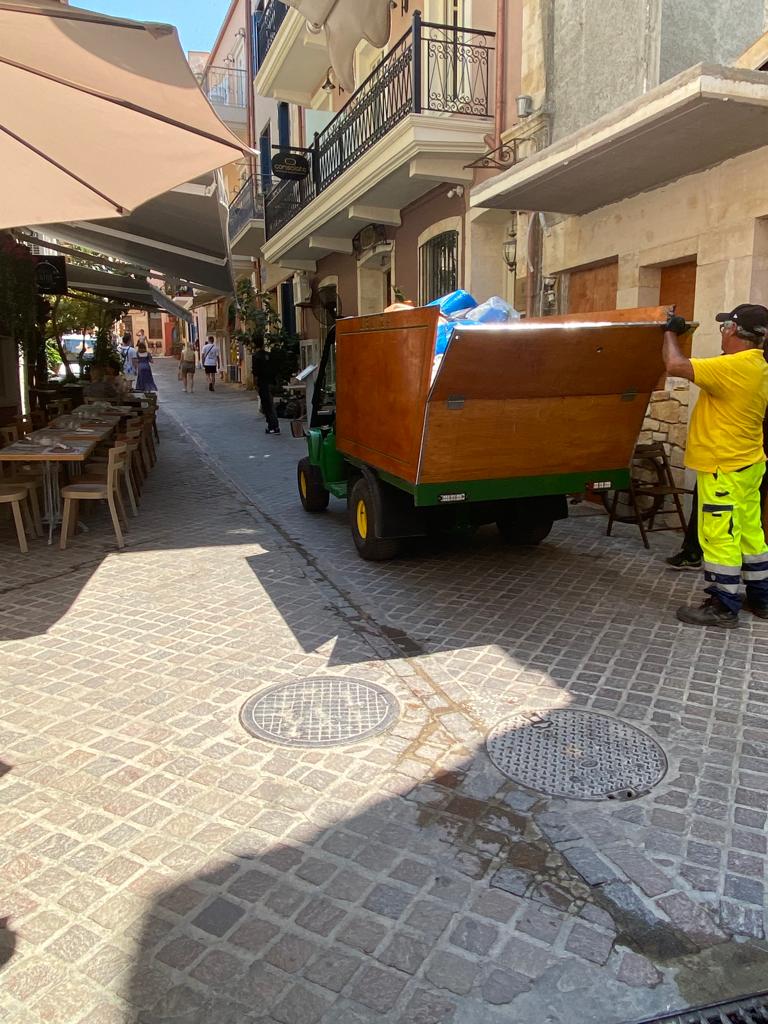Romania is not the only developing country who has had to implement new waste management systems. The Știrea Verde reporters have witnessed these changes taking place in an area which boasts a breath-taking and varied scenery: the island of Crete. 15 years ago, an archaic waste management system still operated on the island. Today, the vast improvements which have been undertaken, as Chania has learned to face the challenges of waste management on an island, are evident.
To better understand how the new systems have been implemented, we have spoken to the representatives of several entities responsible for waste management in the municipality of Chania. The first person to talk to us has been Michael Tsoupakis, Deputy Mayor and Head of the Department of Environment, Green Policies and Cleanliness of the Municipality of Chania, as well as the President of the Board of DEDISA AE(OTA). We asked him a series of questions on how the municipality manages its waste. You can read their answers below.
Rep.: How many cities are involved in waste management in Chania and how
does this association work? What population – in terms of number of people – does the association between the cities have?
Michael Tsoupakis: The region of Chania consists of 7 municipalities the municipality of Chania
(permanent population 111.375), Platanias(15.299), Kissamos(10.632) Kantanos-sellinos(5.009), Sfakia (2.002)and the island of Gavdos (142).
Every municipality is responsible for the collection of the solid waste produced in its territory using its own collection trucks or by collection services provided by DEDISA SA (inter-municipal enterprise for solid waste collection of Chania). All solid waste are transported to the Mechanical
recycling and composting facility and landfill of Chania, owned by DEDISA SA in the Akrotiri area.
In some remote municipalities, waste transfer stations have been installed or will be installed to reduce waste transfer costs). DEDISA is responsible for collecting the source-separated recyclable materials (blue container). The collected recyclable materials are also processed in the
above facility. DEDISA is also responsible for the collection of glass packaging
in the region (Yellow container) and the process of bulky materials (green waste, electric devices, furniture, mattresses, and other oversize materials).
Bio-waste (brown containers) are also source segregated and collected by the
municipalities and processed by DEDISA for compost production.
DEDISA SA is a private enterprise owned by the 7 municipalities of the Chania Region. The principal shareholder is the municipality of Chania, more than 90% of the shares( data 2023), and the board of members consists of, the municipalities’ mayors. DEDISA is the only authority responsible for solid waste treatment in the region of Chania.
Rep.: How many tourists do you have in a year?
Michael Tsoupakis: There were 1.296.959 arrivals in the airport of Chania for 2022, while for 2021 were 661.440 arrivals. The port of Chania (in Souda bay) had 179.681 passengers visitors from cruise ships in 2022, while the same number for 2021 was 45.619 passengers.
Rep.: What amount of garbage does the resident population generate, and what
is the plus that tourists bring?
Michael Tsoupakis: It is estimated that the average yearly waste production per capita for
household waste (green and blue containers) is 562 t/permeant per capita/year (based on the monthly weight of waste arriving in the Mechanical recycling and composting facility –landfill). The waste production is almost doubled during summer, as seen in the following table.
Monthly % distribution of annual waste production for 2022
| ReciclareContainer albastru | Amestecate Container verde | Suma Totală | |
| Jan | 6,06% | 6,11% | 6,10% |
| Feb | 6,21% | 5,82% | 5,89% |
| Mar | 6,86% | 6,49% | 6,55% |
| Apr | 8,04% | 7,77% | 7,82% |
| Mai | 8,54% | 8,97% | 8,90% |
| Jun | 9,63% | 9,95% | 9,89% |
| Jul | 10,21% | 11,15% | 10,99% |
| Aug | 10,97% | 12,37% | 12,12% |
| Sep | 10,07% | 10,14% | 10,13% |
| Oct | 9,04% | 8,54% | 8,62% |
| Nov | 7,40% | 6,27% | 6,47% |
| Dec | 6,98% | 6,41% | 6,51% |
| Total/an | 100,00% | 100,00% | 100,00% |
Rep.: How many garbage trucks serve the garbage collection and what pollution
rate do they have?
Michael Tsoupakis: Every municipality is responsible for the waste collection in its territory. It
uses owed trucks to collect and transport them to the waste facility or the nearest waste transfer station.
Typical mobile waste transfer stations comprise an elevated stationary platform featuring a hopper at the edge. A 56 m3 semi-trailer, parked beneath the platform, receives the waste materials. The semi-trailer is towed to the waste facility by a tractor compliant with the EURO VI emission standards.
The typical collection track is the 16 m 3 haul volume, press-type trucks (Kaousis – CRV 2000 Standard ® ) equipped with EURO VI engines. Several older technology vehicles are also used depending on the municipality.
The municipality of Chania is served by 42 collection vehicles for mixed waste collection (The number of mixed collection trucks that entered the waste facility serving the municipality of Chania and performed more than 2 collection trips per month for 2022).
For the collection of recyclables, a fleet of approximately 15 collection trucks was used during 2022 (Number of recycling collection trucks entered the waste facility serving the region of Chania and collecting more than 1% of the total annual recyclable waste).
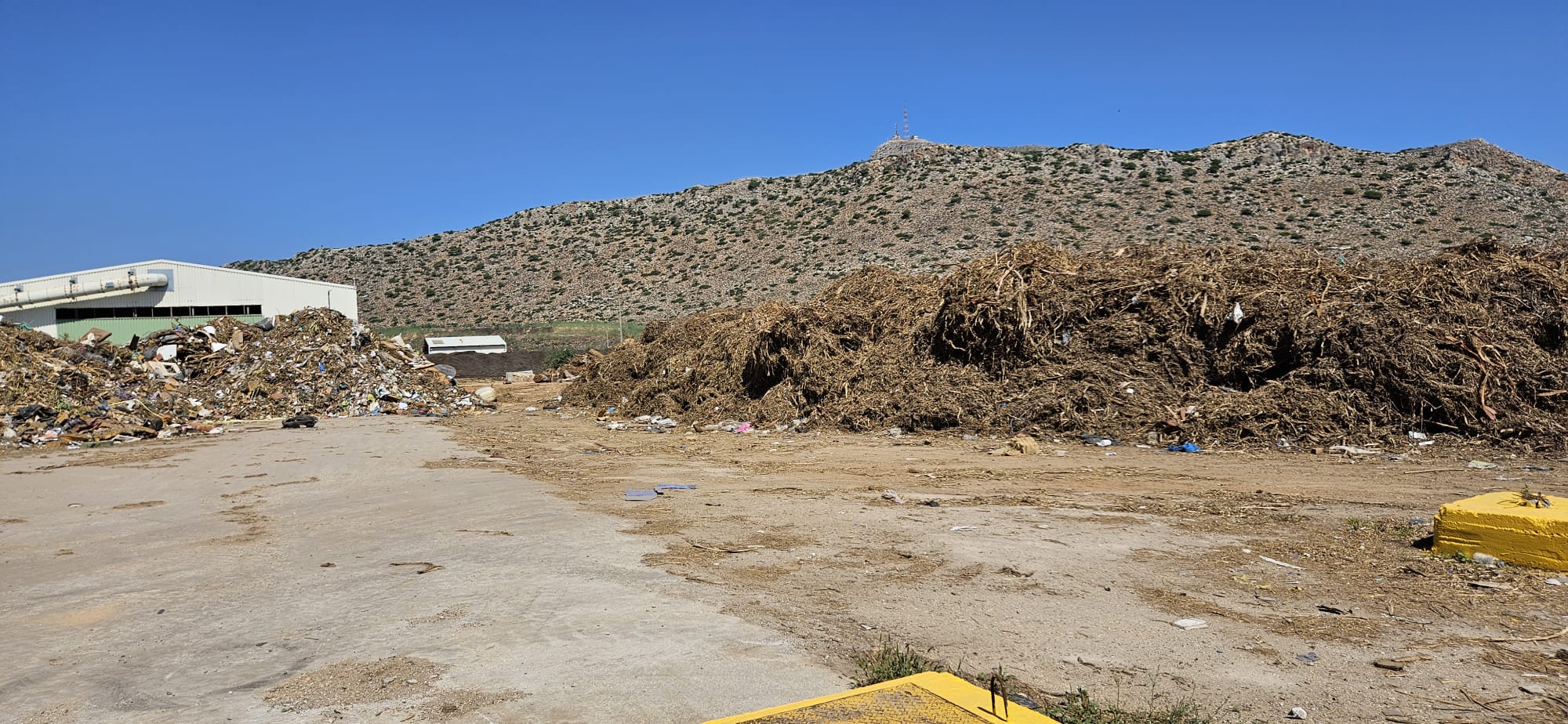
Rep.: How many landfills does Chania currently have and how many have been
closed/greened? What is the capacity of the new landfill?
Michael Tsoupakis: The only sanitary landfill in Chania is located in the Akrotiri area at the
northeast of the region it is situated near the Koroupitos old dumpsite (closed in 2000 and restored in 2007).
The landfill site, situated close to the waste treatment facility, serves as the final destination for all residues resulting from the facility’s treatment processes.
Encompassing an area of 130.000 square meters, the landfill is divided into three sections: I, II, and III. Phase I and II, which occupy areas of 35,100 m 2 and 39,120 m 2, respectively, have been in operation since 2005 and have cumulatively received approximately 986.379,27 m 3 of waste during this period. Phase C was constructed in 2019. Spanning an area of 67.000 m 2 , this new section is
designed to accommodate an estimated 100,700 m3 of waste.
Rep.: You have a very important waste management center in Chania. How much did it cost and what was the contribution of the European Union and how long was it built from the project stage to the inauguration?
Michael Tsoupakis: The Mechanical recycling and composting facility – landfill phase I,II was
constructed in 2003-2005 and funded by the EU Cohesion Fund with 23milion Euros covering a total area of 235.000 m 2 (135.000m 2 acres of landfill facilities), in 2016 the facility received a major upgrade in the process lines and mobile equipment, introducing optical separation units for recycling and mixed waste treatment, costing 7,8 million euros funded by the EU.
Rep.: How many people are employed in total (office staff, field staff, drivers,
etc.) in the waste management center?
Michael Tsoupakis: About 135 personnel of all categories are employed in the waste facility.
Rep.: What amount of garbage is diverted from the landfill after sorting?
Michael Tsoupakis: The Mechanical recycling and composting facility can process both recyclables or mixed waste in its sorting lines recovering Plastic packaging and film, ferrous and aluminium metals and printed paper and cardboard, it also collects the organic fragment of solid waste to produce CLO.
During Mix waste treatment, 55,8 % of wet waste material is discarded into landfills the rest is recovered (plastic, metal, paper and CLO)(data 2019).
During recycling treatment, 43.52% of the material is discarded into the landfill. The rest is recovered (plastic, metal and paper).
Rep.: What is the most common recyclable material?
Michael Tsoupakis: Printed paper and cardboard hold 55% of the total recyclable materials the
facility managed to recover 83% of that material (data 2019).
Rep.: What does the Chania administration do with recyclable materials?
Michael Tsoupakis: The recovered recyclable materials, plastic (PET, PE film, HDPE, PP), paper-
like (printed paper, cardboard, tetra pack) metals (ferrous, aluminium) are sent to facilities for further treatment.
Rep.: Is selective collection done from the population with respect to economic
agents? If so, please tell me in what percentage?
Michael Tsoupakis: It is done based on the municipality of Chania policy. Municipal fees (including sanitation fees) are reduced for the population with low-income
Rep.: Did the Chania administration choose the „pay as you throw” method?
Michael Tsoupakis: No, not yet ( a plan for a pay-as-you-throw is in the process).
Rep.: What are the fees or rates that a family in Chania pays for the sanitation
service? Is the payment made per family member, is it made per house size, etc.? What about economic agents?
Michael Tsoupakis: Dedisa charges the municipalities based on their total waste production. The
municipalities charge the waste management to the public based on the property area calculated in square meter in the electricity bill. There are also different rates depending on the type of property use (residence or business). (at this link are the current fees for sanitation and public lighting, unfortunately, in Greek)
Rep.: Are private firms, private companies also involved in the sanitation service in Chania? If so, please give me the details. If not, please explain to me the reasons why this method was chosen. In Bucharest (as an example), private companies are involved in this whole process. When a company brings a quantity of waste to the landfill, it must pay the owner of the landfill a fee. Is it the same in Chania? If so, please tell me the value of this tariff.
Michael Tsoupakis: DEDISA is the only private enterprise that manages household solid waste in
the region of Chania. It owns and manages the waste facility and the landfill.
The gate fee is 60 Euros per tone of mixed waste. There are also other independent collection systems for waste like batteries, clothes, or construction and demolition waste.
Rep.: Considering that waste management is exclusively administered by Chania City Hall (and the association with other cities), can it be said to be a profitable business? Does the municipality make an economic profit through this activity, or is the municipality forced to supplement the budget given for sanitation?
Michael Tsoupakis: The overall administration of solid waste poses a notable economic challenge
on a global scale as well as in Greece. This aspect of waste management lacks financial viability. Consequently, the burden of the cost falls upon the citizens, who generate the waste and bear the responsibility through specialized fees. Although attempts have been made to generate income
from the sales of recyclable materials or energy derived from waste, it is evident that the generated revenues are insufficient to offset the comprehensive expenses associated with solid waste management.
Rep: From your knowledge, are there any other companies in Greece that have
the success that Chania has?
Michael Tsoupakis: You should come in contact with Diadyma, in Kozani. Their efforts in waste management are outstanding.
By way of conclusion
Perhaps the most beautiful island of the Greek islands, Crete is no bigger than the Romanian region of Dobrogea. In Crete, you can easily admire both the sunrise and the sunset. The island itself is a superlative, a place blessed by the Gods (legends say that Zeus, himself, was born in Crete), a place where even if you are short of an imagination, you still can’t get bored. A place which, once you have visited and felt its vibe, prompts you to return time and time again, and to to never want to leave. It is the place that the Gods created without skimping on anything.
The Cretan administration understood that without investment, rigor and the laws they (finally) chose to enforce, the place would degrade to extinction. The results of the wise decisions which they have made not too long ago are starting to show. The Chania administration are on the right track. They might seem to have gotten down to business later than others, but they will definitely overtake us. They bury less than we do, and sort and recycle more. And, most importantly, not only are they not ashamed to work, but they do so with a sense of responsibility.
